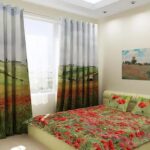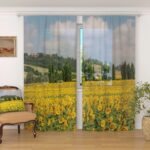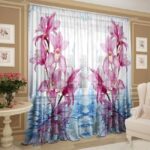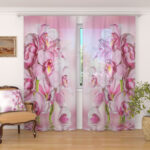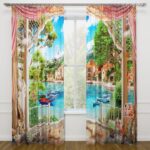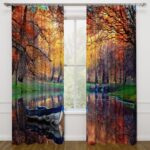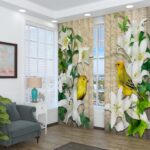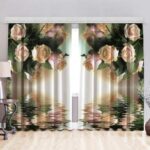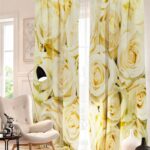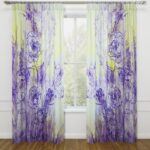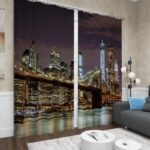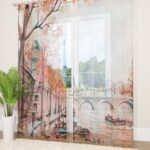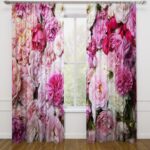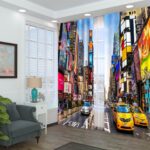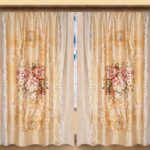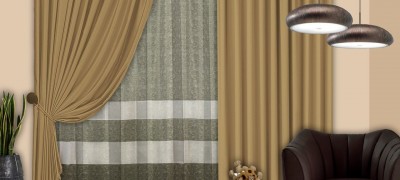Characteristics and application of the photo cover in the interior
It became very easy to create something special. This is helped by manufacturers who use new technologies for the production of products in order to satisfy any desires of buyers. One of these inventions, which appeared not so long ago, is photo printing on curtains.

What is a photo tulle
A unique image is applied to any kind of fabric by means of printing - this is how a photo tulle is obtained. Patterned tulle has a high performance. Thanks to the printing technology, inks are resistant to various influences: they do not fade, do not fade, and retain their original shape.
When leaving, you must follow simple rules: wash in the "synthetic" mode at 30 degrees, without bleach and aggressive agents, iron at a temperature not exceeding 130 degrees.
The image is applied to the material by sublimation transfer and large format direct printing.
Sublimation transfer
Buyers are rarely interested in the technology of execution of the purchased products. It is she who can tell how high-quality a thing is.

Sublimation occurs when the material is instantly heated over 100 degrees, while the substance passes from a solid state to a gaseous state. An image is applied to sublimation or thermal stencil paper using a printer. It is transferred to the fabric, instantly heating the paint with a heat press, which, when it turns into a gaseous state, is absorbed, deeply penetrating into the surface of the material. The result is a photographic quality image.

Additional Information! During printing, paper and fabric are fixed with special tape, which does not leave marks on the fabric.
Advantages of the photo tulle made with the help of sublimation:
- The paint does not fade after a large number of washes;
- You can transfer an unlimited number of colors;
- Harmless paints, do not contain toxic substances.

The disadvantages include:
- This method is used only on synthetic fabrics (polyester, polyester);
- Thermal stencil paper, sublimation inks are expensive and used in large quantities;
- Slight displacement of pixels in the image occurs when the paper and material are displaced.
Direct print
Direct printing involves drawing a pattern without intermediate media. The printing unit of a large-format inkjet printer is used, with special nozzles. With the help of a thermoplate, the fibers of the fabric are smoothed, then a drawing is immediately printed on a light matter, a primer is first applied to a dark one. The final stage is fixing the colors by heating the fabric to 150 degrees.
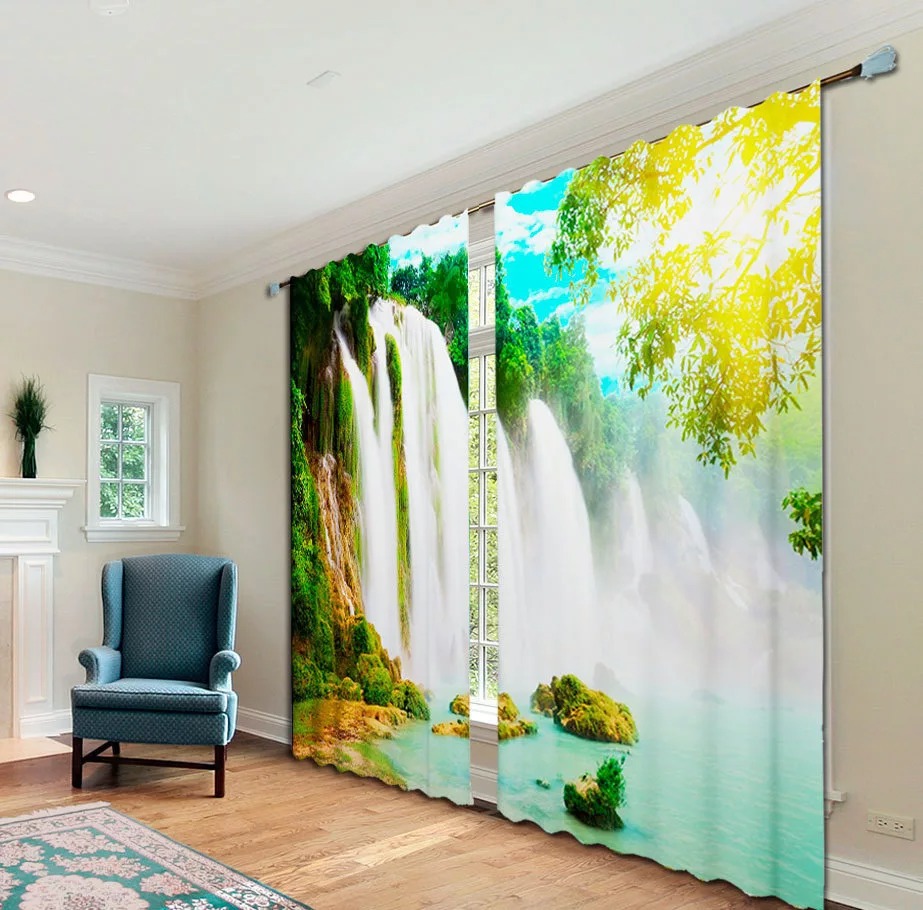
The advantages of this method:
- Polymerized paints are absorbed into the fibers, becoming part of the material, as a result, the image can withstand more than 60 washes, does not fade, does not fade;
- Detailing beats sublimation transfer;
- You can apply the pattern to any type of fabric.
There is only one drawback - the price. The cost and maintenance of large-format printers, as well as polymerized inks, require considerable costs, and accordingly the cost of the product is high.

Varieties
Most often, the following fabrics are used for photo printing:
- The satin has a smooth and shiny surface, on the seamy side it is rough with a dense texture. The fabric contains silk, cotton and synthetic fibers, which increases its wear resistance;
- Satin - consists of dense cotton fibers. Soft and shiny material, does not shrink, paints remain bright for a long time;
- Gabardine is composed of a blend of synthetic, cotton and wool fibers. Soft touch and lightweight fabric. The material is durable, resilient and dustproof;
- Chiffon is a translucent fabric made of weaves of synthetic and natural fibers (silk, viscose, polyamide, polyester).

The pattern can also be printed on blackout material to reliably darken the room.
Images that are popular can be divided into groups:
- Flower arrangements: peonies, roses, gerberas, orchids, lavender with macro effect;
- Photos of animals: cats, swans, butterflies, owl, birds of paradise;
- Natural phenomena: lightning, rain, clouds, etc .;
- Urban and natural landscapes;
- Black and white retro shots;
- Children's pictures from cartoons or fairy tales;
- Images with 3D effect.
The possibilities of choice are endless, taking into account the fact that you can order the printing of your own image, chosen according to your desire and taste. Reviews about the photo tulle from buyers will help you choose the right photo to apply to the fabric.

Interior use
The design options for the window opening with tulle with photo printing has many advantages as well as disadvantages. A bright volumetric drawing can emphasize the individuality of the interior, or vice versa, negate all efforts to create a room design.

The main recommendations for using the phototulum are as follows:
- Visually expand the space with a tulle with an image in the horizontal plane;
- For small rooms, it is better to choose chiffon with a calm pacifying pattern;
- If the wallpaper is not monochromatic, with an ornament, then the phototulum will be overkill, it can dazzle in the eyes;
- In a small room, tulle with photo printing with a 3d effect often has negative reviews, since the volumetric drawing conceals an already small space;
- An image with perspective, such as a road going into the distance or the horizon, add space to a room;
- When choosing a curtain, measure the exact height of the ceiling so you don't have to trim the fabric. This can ruin the appearance of the drawing.
Note! The snow-white base of the fabric will help to balance the colorful pattern.
Kitchen
This is a room with specific characteristics: humidity, vapors and an increased risk of contamination. Therefore, the fabrics should be practical, just like the pattern. You can use bright colors, images of vegetables and fruits, floral array. These curtains fit well in a light, spacious kitchen.

For a small room, it is appropriate to depict one detail on the canvas: poppy, sunflower, raspberry, lemon, etc.
Living room
In the living room, you can afford to complicate the drawing of the photo cover, to make the decor more daring, taking into account the calm, light interior in the style of minimalism. A pair of sheer curtains and thick curtains with bright roses or orchids will enliven the room. Add embroidered elements to the image of a scattering of beads or flying butterflies.

In a room with many pieces of furniture, focus the pattern on the upper part of the canvas, and with low ceilings, on the contrary, on the lower edge of the textile. Look harmoniously in the living room with the sights of London, Rome, Paris.
Hall
All attention will be focused on picturesque paintings, insignificant in everyday life, natural phenomena, but with a three-dimensional effect or as close as possible, an incredible sight:
- dandelions with white "parachutes" flying up;
- green succulent grass against the background of clouds;
- twigs of a blossoming tree, etc.

Also majestic waterfalls and trees, city beauty: bridges, skyscrapers, night cities. All this, as possible, by the way will suit the hall.
Bedroom
Should be comfortable to sleep. You can choose a curtain with a pattern in cool shades or muted colors. Imitation of a window with a view of the sea or mountain valleys can inspire pleasant thoughts about relaxation. But in principle, if you wish, you can choose any example of a photo cover in the interior from real photos. Images of any manifestation of nature are very realistic and will be the most suitable for the bedroom.

Replacing an ordinary curtain with a photo curtain, you can transform the whole room at once. However, do not forget that decorating windows in all rooms in this way will be overkill.
Video: using a photo curtain in the interior of rooms


